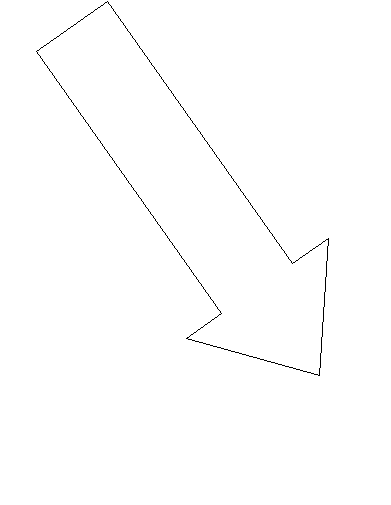Конспект урока «Защита окружающей среды» по английскому языку
Романец Анна Валерьевна
Учитель английского языка
ГБОУ СОШ №538 имени С.В. Гришина г. Москва
Конспект урока по теме «Защита окружающей среды»
Тема: “Environment Protection”
Topic: “Environment Protection”
Воспитательные задачи:
-
расширить кругозор учащихся;
-
научить учащихся взаимодействовать друг с другом;
-
научить учащихся уважать мнение других.
Educational aims:
-
to enlarge the students’ scope;
-
to teach students to cooperate;
-
to teach students to respect other’s opinion.
Цели:
-
сформировать умения чтения;
-
сформировать лексические навыки.
Aims:
-
to form reading skills;
-
to form lexical skills.
Сопутствующие задачи:
-
совершенствовать произносительные навыки;
-
совершенствовать умения монологического высказывания.
Subsidiary aims:
-
to improve pronouncing skills;
-
to develop speaking skills of monologue.
Речевой материал: текст «Recycling», лексические единицы: recycling, waste, success, material, headlights, rug, effort, to reduce, to recycle, to create, to treat, to refuse, to reuse, to mine, to sterilize, to refilled, recycled, recyclable, aluminium, to be good for; to throw away; to find out; recycling paper; to turn into; instead of; to be made of; scrap metal; to pave streets.
Text and vocabulary: the text “Recycling”, vocabulary: recycling, waste, success, material, headlights, rug, effort, to reduce, to recycle, to create, to treat, to refuse, to reuse, to mine, to sterilize, to refilled, recycled, recyclable, aluminium, to be good for; to throw away; to find out; recycling paper; to turn into; instead of; to be made of; scrap metal; to pave streets.
Оснащение: текст, раздаточный материал, знак «Переработка отходов».
Aids: the text, handouts, the sign “Recycling”.
Appendix 1



Appendix 2
The matching task
Ex.1. Match the words with their definitions.
T
 o recycle
o recycle
T o reduce
o reduce
W aste
aste

T o treat
o treat
T o refuse
o refuse
T o reuse
o reuse
S crap
crap
To mine

To threw away
Effort
to dig into (the earth) for minerals
to pass (a substance) through a system again for further treatment or use
to reject
garbage, rubbish, or trash
to deal with or regard in a certain manner
to make or become smaller in size, number, etc.
a determined attempt
to decline to accept
to use again
waste material or used articles, especially metal
The vocabulary task prepares students for further reading, reduces difficulties in understanding of the text and makes them focus on the key words. This exercise also checks general knowledge of the English language.
Appendix 3
Reading task
You are going to read the text about recycling. Your task is to choose the most suitable heading from the list A-I for each part (1-7) of the article. There is one extra heading which you do not need to use.
A. Straw vs. paper
B. Recycled plastic
C. Reusing glass
D. Recycling metal
F. The process of recycling
G. Recycling tin cans
H. The importance of recycling
I. Recycling paper
Key: 1. F; 2. I; 3. A; 4. B; 5. D; 6. C; 7. H.
This task helps students to summarize every passage of the text and find out the main subject of each part. So this exercise checks the understanding of each part in the whole.
RECYCLING
(1) Recycling is a very important subject, and one that is becoming more so all the time. As we all know, it reduces waste and is good for the environment. But what do recycling centres do with the things we throw away? I found out some very interesting information.
(2) Recycling paper has been the biggest success. In 1990, in the USA, more than 20 million tons of paper were recycled and turned into birthday cards, cereal boxes, and hundreds of other things. Paper is the easiest material to recycle and, as David Dougherty of Clean Washington said, "You can use it six times over, then burn what's left to create energy."
(3) Wisconsin cow farmer George Plenty had the most interesting use for recycled paper: he uses it instead of straw in his barn. "It's cheaper than straw," he said, "but even if the price were the same, I wouldn't go back."
(4) Plastic is the hardest material to recycle, because there are so many different kinds, all of which need to be treated differently. At the moment, only two per cent of the plastic used in the US is recycled. But is does have its uses: one company uses plastic from recycled car headlights to make windows. In some ways they are better than normal windows, because they are much harder to break. Another company, Image Carpets, uses plastic to make carpets and rugs. A comment made by the manager showed us how attitudes towards recycling have changed. "We worried that people might refuse to buy the carpets if they knew they were recycled," said sales Manager, John Richmeier. "Now we advertise the fact as a marketing strategy."
(5) Metal is another important material. It is easier to recycle an aluminium can than to make a new one. It is also 20 per cent cheaper, and uses only 5 per cent of the energy that making a new can would use. So many of the things we use are made of metal, and can all be reused after they stop working. Recycling car parts, for example, is a big business. There is also very little waste involved in recycling metal. Steel is 100 per cent recyclable, and can be recycled hundreds of times. Recycling steel is cheaper than mining it. A lot of America's scrap metal is taken by the Japanese, recycled, and eventually sold back to America as new cars.
(6) 20 per cent of America's glass is recycled, and used for a number of things. For example, it can be mixed with asphalt or cement and used to pave streets. It can also be melted down and used to make new bottles. However, unlike the other materials, glass can also be reused commercially in its original form; many types of bottles are returned to bottling plants, sterilized and refilled. Recycling and reusing glass is actually a huge worldwide business, with bottle banks appearing everywhere.
(7) So remember, think before you throw things away — they may still be useful. If we all make an effort to recycle, we can make the planet a cleaner place to live.
Appendix 4
The system of comprehensive exercises
The purpose of teaching reading is forming reading skills. The main criterion here is the degree of understanding of the text. To check it a teacher should suggest a system of comprehensive exercises.
The aim of this lesson is to check the understanding of the text “Recycling”. I would suggest the following comprehensive exercises.
Ex.1
Answer the following questions using the text.
-
What is the problem described here?
-
What is recycling?
-
Why do American farmers prefer using paper to straw?
-
What things can be made through the process of recycling?
-
Why is recycling so important nowadays?
The questions invite some measure of interpretation and application of the reader’s background knowledge. They demand real comprehension, and encourage an interactive, personal “engaging” with the text as well as being more interesting to do. Interpretive questions often have more than one possible answer and can be used for discussion.
Ex.2
Mark the following sentences as “true” (T) or “false” (F).
-
Recycling reduces waste and is bad for the environment. (F)
-
Recycled paper turns into birthday cards. (T)
-
From recycled car parts windows are made. (F)
-
Recycling steel is cheaper than mining of metal. (T)
-
We can make the planet cleaner place to live, if we all make an effort to recycle. (T)
This exercise checks students’ understanding of the whole text.
Ex. 3
Match the beginning and the ending of the sentences.
-
Recycling is a very important subject…
-
More than 20 million tons of paper were recycled…
-
Plastic is the hardest material to recycle…
-
So many of the things we use are made of metal…
-
Steel is 100 per cent recyclable...
-
Glass can also be melted down ...
-
and can all be reused after they stop working.
-
because there are so many different kinds, all of which need to be treated differently.
-
and can be recycled hundreds of times.
-
and used to make new bottles.
-
and one that is becoming more so all the time.
-
and turned into birthday cards, cereal boxes, and hundreds of other things.
Key: 1. E, 2. F, 3. B, 4. A, 5. C, 6. D.
To make sure the students have understood the meanings of key sentences, I suggest an exercise in matching the beginning and the ending of the sentences.
Ex. 4
Find in the text sentences which:
-
enumerate the things done from paper, metal, plastic and glass;
-
explain the popularity of recycling nowadays.
The exercise helps to check the understanding of the whole text. It is a bit more difficult than the previous exercises because the questions do not quote verbatim from the text but paraphrase it, thus they encourage learners to interpret the facts. The exercise makes students look through the text again and again, thus developing their speed of reading and visual memory, on the one hand, on the other hand, to find the sentences, which are answers to the given tasks, students should recall the content of the text and think about the key words.
Appendix 5
Topical vocabulary list
Group 1. Single words.
| Verbs | Adjectives | |
| Recycling Waste Success Material Headlights Rug Effort | To reduce To recycle To create To treat To refuse To reuse To mine To sterilize To refilled | Recycled Recyclable Aluminium |
Group 2. Collocations.
To be good for; to throw away; to find out; recycling paper; to turn into; instead of; to be made of; scrap metal; to pave streets.
I think this text will enable my students to speak on the topic “Environment protection”. This topic is recommended for pupils of the 10th and 11th forms. I've made my list of topical vocabulary by grouping words into two groups: group 1 represents single words (nouns, adjectives, verbs); group2 includes collocations (word combinations).
Appendix 6
Vocabulary exercises
Ex.1
Find the odd word out.
-
dustbin – cupboard – waste-paper basket – ashtray
-
tin – can – metal – plastic
-
waste – litter – glass – rubbish
-
response – reply – answer – question
-
reduce – involve – deflate – decrease
Key: cupboard, plastic, glass, question, involve.
The exercise helps students to establish similarities and differences in the meaning of the words.
Ex. 2
Fill in the appropriate word from the list. Use the word(s) only once.
To be good
To create
To throw
Scrap
To be made
To find out
To pave
Recycling
-
…paper
-
…metal
-
…some information
-
…energy
-
…things away
-
…for environment
-
…of glass
-
…streets
Key: recycling paper; scrap metal; to find out some information; to create energy; to throw things away; to be good for environment; to be made of glass; to pave streets.
It is necessary to practice students in memorizing collocations from the text. For this purpose I would suggest an exercise in gap-filling.
Ex.3
Fill in the gaps with the appropriate word(s) from the list below:
Plastic
Environmentally aware
Recycling
Environment
Products
Aluminium
Decompose
Disposing of
Bottle banks
It is important these days to be as 1)… as possible, which means 2)… our waste instead of 3)… it in the usual way. For example, instead of throwing 4)… cans away, they can be crushed and taken for recycling, and bottles can be taken to 5)… instead of being put in the rubbish bin. We should try to use as little 6)… as possible because it takes a long time to 7)… and to buy recycled paper to write on. Recycled 8)… products are often the same price as normal ones, but a lot kinder to the 9)… .
Key:
-
Environmentally aware
-
Recycling
-
Disposing of
-
Aluminium
-
Bottle banks
-
Plastic
-
Decompose
-
Products
-
Environment
The exercise is aimed to help in summarizing of the text and prepare for the following discussion.
Psychological and Physical Development of the 11th form Students
Steady growth development occurs in children in this age group. The 11th form students gradually take control over both fine and gross motor skills.
Steady growth in learning begins to occur again between the ages of 14 and 16 years of age. Children of the age of 16 begin to develop an analytical solution process to solve their analytical questions.
Cognitive, emotional and attitudinal changes which are characteristics of this period, often take place during adolescence, and this can be a cause of conflict on one hand and positive personality development on the other. Students are more interested in what they are learning when they are given an opportunity to apply what they learn. This stage brings cognition to its final form. This person no longer requires concrete objects to make rational judgments. At this point, he is capable of hypothetical and deductive reasoning.
It should also be noted that adolescence is the stage of a psychological breakthrough in a person's life when the cognitive development is rapid and the thoughts, ideas and concepts developed at this period of life greatly influence one's future life, playing a major role in character and personality formation.
Teaching for the adolescent may be wide-ranging because he'll be able to consider many possibilities from several perspectives. During this period, learning and information-processing increase in speed, memory becomes increasingly-longer, and symbol use and the capacity for abstraction develop until a near-adult level is reached by adolescence. Mood fluctuations may still be common, but emotional stability begins to stabilize. Treating the student as an honorary adult encourages more responsible behavior and elicits more insightful responses to questions that are complicated and stimulating rather than simple and rote.
Procedure
| Time | Ways of Interac-tion/Or-ganizing the class | Teacher | Class | Comments/Notes | |
| 1. Warming-up stage | 3 min. | T-Cl | Good morning, glad to see you again! Sit down please. How are you today? I’m glad you’re doing fine. Well, first of all, I'd like to know who is absent today. Nobody? Perfect! OK, to begin with, let’s play a game which is connected with the topic of our lesson “Environment”. So, I name a word and one of you says the word which starts with the last letter of my word and so on. But you should use only words correlated with the topic. Do you have any questions? Let’s do it in chain. Let's start now. So my word is "environment" and it is also the topic of the game. | Good morning. We are fine, thank you. The students answer, if somebody is absent or not. “No, everything is clear/ we have no questions.” The students continue the game. Ex., environment – trouble – erosion – nature… | The warming-up activity helps the teacher to establish a contact with the class and create a positive, friendly and working atmosphere. The warming-up activity in the form of the game motivates students and prepares them for the English lesson. Moreover, the topical material of this warming-up activity should help students in the following tasks. |
| 2. Pre-reading Stage a)creating motivation with the help of introductory questions. | 4 min | T-Cl | Thank you, it was rather fun. And you know really a lot of words on the theme “Environment and its Protection”. To continue our lesson, I’d like you to look at the blackboard. Here is a sign. (Ap. 1) What does this sign stand for in your opinion? …Thank you! Now, please, look at the title of the text. Think of as many words as possible related to the theme “Recycling”. How can each of us recycle objects? Is recycling so popular in Russia as in the USA? Is it possible to adopt the process of recycling in our country? Why? Thank you for your ideas. | The students give ideas about the sign, think of its meaning. S1: “It is a sign of circulation of water.” S2: “This sign means that from one thing we can make another one of the same quality.” The students name the words correlated with the topic “Recycling”, for example, “reusing”, “waste”, “reduce”, etc. | The teacher prepares students for reading the article with the help of introductory questions on the topic and appropriate illustrations. It helps students to understand about what the following text is. Working with the title of the text should help students to predict the content of the article. |
| 2. Pre-reading Stage b) language preparation (matching task) (Ap. 2) | 3 min | T-Cl S1 – S2 T-S1,2,3,4 5.6.7… | Before reading the text, I’m going to give you the cards with the words from the text (the teacher distributes the handouts among the students). I want you to match the words from the first column with their definitions in the second one to make sure you know all of them, because they may help you in understanding of the article. Please work in pairs. You have 1-2 minutes to do the task. Well, you time is over. Let's check it one by one. | The students work in pairs with the cards. The students read the words and their definitions. | The vocabulary task prepares students for further reading and makes them focus on the key words. This exercise also checks general knowledge of the English language. Finally, pair work creates an additional motivation and makes the task more interesting. |
| 3. While-reading Stage: recognizing the summary of the text | 6-7 min | T-Cl S1-S2 T-Cl | Well, you are going to read the text about recycling. Your task is to choose the most suitable heading from the list A-I for each part (1-7) of the article. There is one extra heading which you do not need to use. Is the task clear? You may work in pairs if you wish. You have about 4 minutes for it. So, get down to work. OK, I see you are ready. Did you like the text? Was it interesting? So what heading is the most suitable for paragraph 1? Thank you for your perfect work! | The students read the text to themselves and after reading they choose the most suitable heading for each part of the article. The students say which heading they have chosen for each passage. | Choosing the heading for passages provides a better understanding of the text and helps the teacher to make sure that all the students in the class have understood the text correctly and that they are ready for further work with the text. |
| 4.Post-reading Stage a)compre-hensive questions (Ap. 4) | 5-6 min | T – Cl Gr T – Gr 1, 2, 3, 4, 5 | Now, please, I’d like you to divide into 5 groups of four. Look at the questions followed the text. Work in groups and answer the questions using the text. You have 3 minutes for the discussion. Well, your time is up. Each group will answer one of the questions, but other groups may add or help in answering. | Students work in groups of four. They discuss questions all together. Then one member of the group answers one of the questions. S1: “Nowadays the environment suffers from various kinds of waste and pollution. One of the solutions of this problem is recycling. It allows to use one and the same material for several times” S2: “Recycling is a process which allows to reuse things.” S3: “Paper is cheaper than straw. Besides it has similar qualities, for example, good absorbability.” S4: “Birthday cards, cereal boxes, windows, bottles, car parts, carpets and rugs can be made .” S5: “Our nature is in danger. So if we all make an effort to recycle, we can make the planet a cleaner place to live.” | In the text there are no exact answers on the questions, so students should invite some measure of interpretation and application. The answers should be a kind of paraphrasing. The questions demand real comprehension. Besides they involves into the work, making it more interesting to do. Moreover, these questions can be used as a basis for discussion. |
| 4.Post-reading Stage b)compre-hensive exercises (Ap. 4) | 8-9 min | T-Cl T-S1,2,3,4.. S1-S2 T-Cl T-S1,2,3… | I see you have caught the main points of the text. But I’d like to check the understanding of the article with help of following exercises. Look at the Ex. 1. Please, read the task. You may use the text to decide if the statement is true or false. Is the task clear? You have 2 minutes to do this. Ready? Let’s check. Very good! Thank you! Now let’s turn to the next exercise. It is a bit more difficult than the previous one, so you may work in pairs. You should match the beginning and the ending of the sentences. If everything is clear you may start working. I see you’re ready. Let’s check then. Thank you! You are very quick-minded students. Now let’s do next exercise, last but not least. I’d like you to find in the text sentences, which enumerate the things done from paper, metal, plastic and glass; and sentences which explain the popularity of recycling nowadays. You have 3 minutes to do the task, then we’ll check it. If you have any questions you may ask now. Well, your time is over. Let’s check. | Students do the exercise on their own. They decide if the statement is true or false. Then they check it with the teacher. After checking the previous exercise, student start doing the next one, working in pairs. They match the beginning and the ending of the sentences. Then it is checked with the teacher. The students do the last of the exercises on their own, using the text. But they answer the questions paraphrasing the sentences or summarizing passages. | The complex of exercises helps to check the understanding of the whole text. These exercises make students look through the text again and again, thus developing their speed of reading and visual memory, on the one hand, on the other hand, to find the sentences, which are answers to the given tasks, students should recall the content of the text and think about the key words. |
| 5. Teaching vocabulary (Ap. 6) | 6-7 min | T-Cl T-S1,2,3… S1-S2 T-S1,2,3… S1-S2 T-S1,2,3… | I see you have absolutely understood the article. Let’s move to another part of our lesson and use the vocabulary of the text in the following exercises. In the first exercise you have for lines of words. In each line there is an unnecessary word, which you are supposed to find out. Is the task clear? Let’s start working. O’K, very good! Now let’s turn to the next exercise. I want you to fill in the appropriate word from the list. Please, work in pairs. You have 2 minutes to do the task. Ready? Let’s check it one by one. Next exercise is more difficult than the previous ones. Here you have a short text. You should fill in the gaps with the words from the list. You may work in pairs if you wish. If everything is clear, you may start working. You have 2 minutes to do this. Are you ready with task? Then, let’s check! | Students cross out an unnecessary word from each line. Then they check the exercise with the teacher. Students work in pairs, filling in the appropriate word from the list. They may use the text. Then the exercise is checked with the teacher. Students do the next exercise on their own. They fill in the gaps with the words from the box, trying not to change the idea of the text. | The first exercise helps students to establish similarities and differences in the meaning of the words. The aim of the second exercise is to practice students in memorizing collocations from the text. This exercise also prepares students for the next task. The third exercise is aimed to help in summarizing of the text and prepare for the following discussion. |
| 6. Summari-zing (discussion) | 3-4 min | T-S1,2,3… | Summing up our lesson, let’s make a shot summary. Today we’ve learnt some facts about recycling. Recycling is an important issue nowadays. I’d like to hear your ideas why it is so important and what we can do to support it. | Students answer the teacher’s questions; share their ideas using the text and exercises. S1: “I would say that recycling is becoming more and more popular, because the nature sources are becoming less. The humanity should decrease the use of them in order to survive.” S2: “Recycling reduces waste and is good for the environment. Also with the help of recycling we can make the planet much cleaner place to live.” | Such a discussion shows the full understanding of the text and learning key words and expressions on the topic by students. |
| 7. Conclusion | 2 min | T-Cl | Thanks for your ideas, work and active participation at the lesson! Your marks are… Open your diaries and put down your home task. Next time, please, be ready with the retelling of the text “Recycling”. The lesson is over. Goodbye! | Students write down the home task. “Thank you for the lesson! Goodbye!” | The polite ending of the lesson full of gratitude from the both sides (the teacher and students) encourage for the future work. |
Здесь представлен конспект к уроку на тему «Защита окружающей среды», который Вы можете бесплатно скачать на нашем сайте. Предмет конспекта: Английский язык Также здесь Вы можете найти дополнительные учебные материалы и презентации по данной теме, используя которые, Вы сможете еще больше заинтересовать аудиторию и преподнести еще больше полезной информации.

